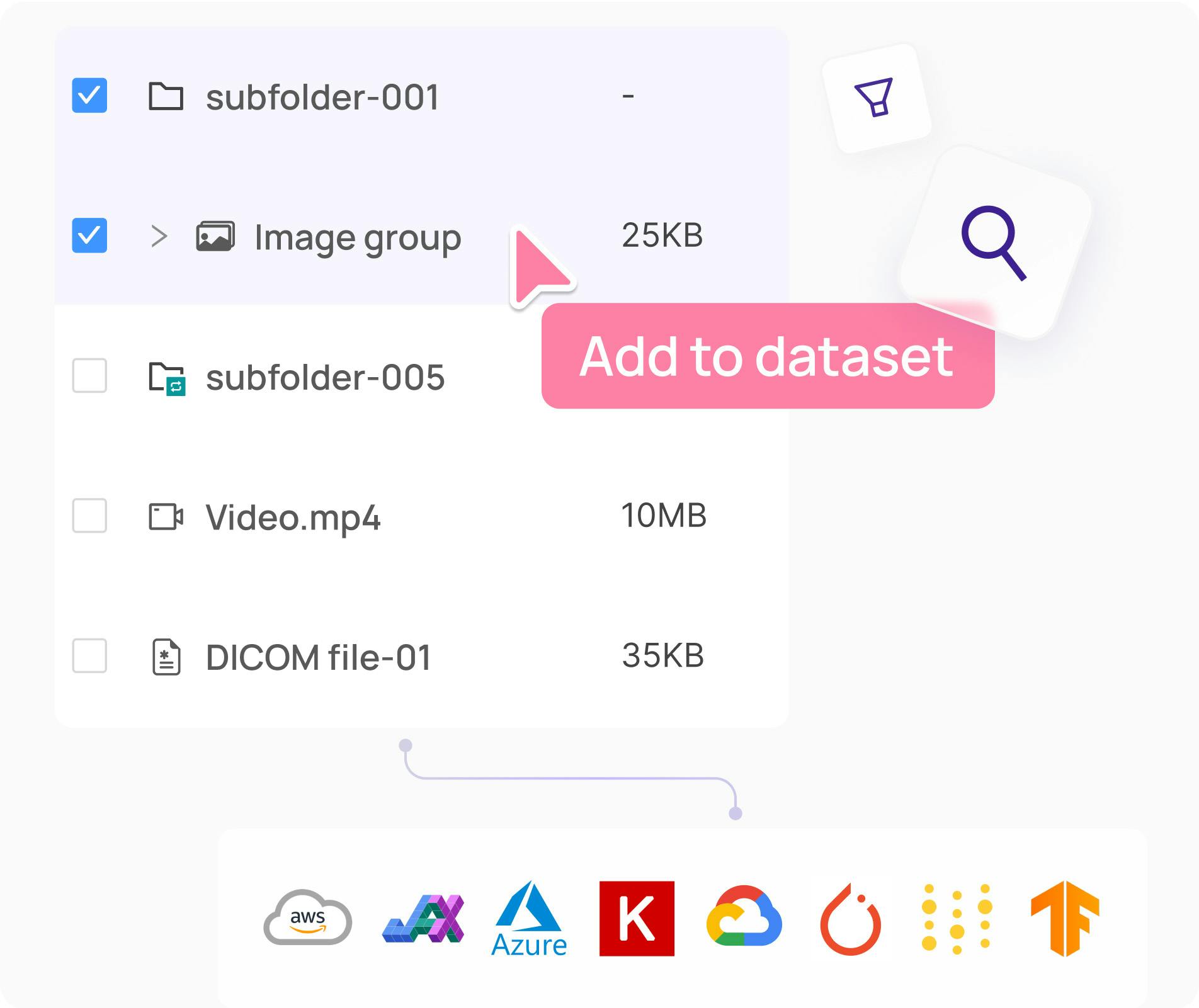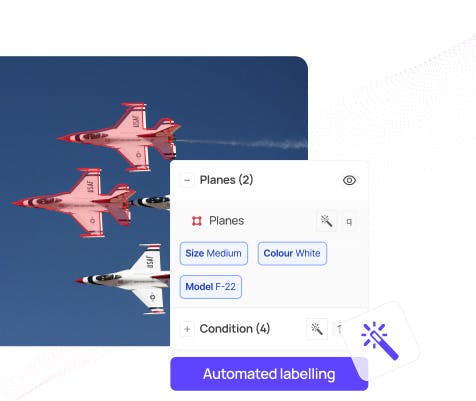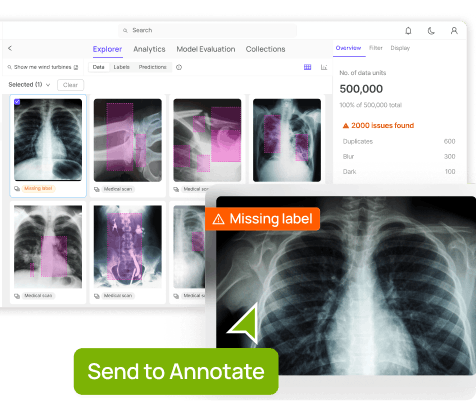Contents
Defining Robotics in the AI World
What is Video Annotation in the Context of Robotics?
Key Features in a Video Annotation Tool for Robotics
Overview of Top Tools
Top Video Annotation Tools for Robotics
Key Takeaways
Encord Blog
Top Video Annotation Tools for Robotics in 2025
5 min read
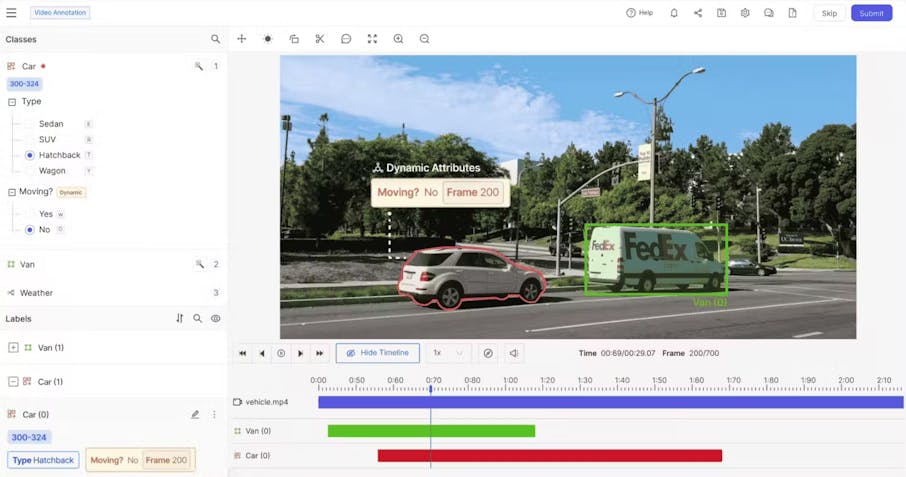
This Guide to the Best Video Annotation Tools for Robotics explains about what is video annotation, and essential features and popular video annotation tools that help turn raw video streams into meaningful ground-truth datasets fueling high-precision robotic-vision models.
In the fast-growing field of robotics, processing video data and generating insights from it is crucial. A robotic system often uses live camera feeds to see and understand things around it. Therefore, a robotic system must be properly trained using the live video data so that it can understand its surroundings better. This training enables the robot to perceive and navigate the world effectively. The training that allows the robotic system to understand its environment, relies on high-quality video annotation. The video annotation involves labeling objects, people, and actions in a video that act as ground truth data for training machine learning models. The machine learning models use this data to learn about their environment.
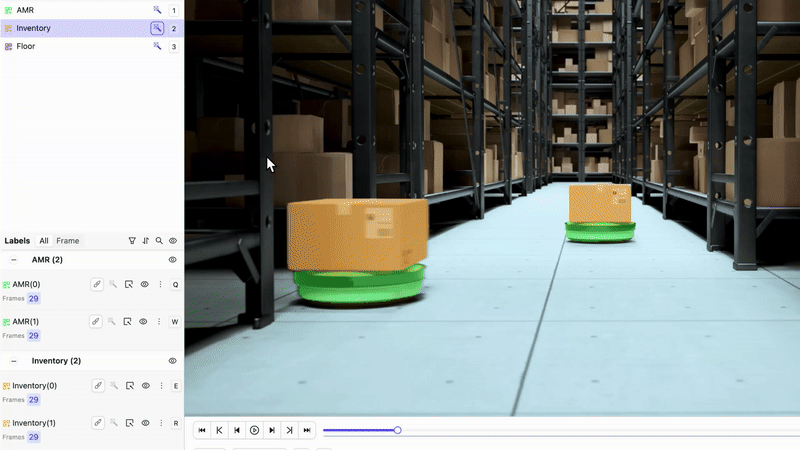
Therefore, video annotation is essential for training ML models that help robotic systems to understand its environment and perform actions. The video annotation provides well-labeled examples that give robots their “eyes,” enabling capabilities such as self-driving cars, surveillance drones, activity recognition systems, and more. Without properly annotated videos, even the most advanced ML models would struggle with basic perception tasks. High-quality annotations have a real impact; for instance, precise video labeling can directly improve the safety and efficiency of industrial robots by enabling more accurate object recognition.
Defining Robotics in the AI World
Robotics is a branch of engineering and computer science that focuses on creating, building, and using robots. Robots are machines that perform complex tasks automatically or semi-automatically.
In the earlier days Robots used to perform repetitive, rule-based tasks. Robotics is now being combined with Artificial Intelligence (AI). Today, AI enabled robots are capable of perceiving, reasoning, learning, and adapting to dynamic environments. Because of the use of AI, robots are now evolving towards truly intelligent machines.

Figure Robot, powered by AI, capable of performing human like task
How Does AI Improve Robotics?
AI plays an important role in Robotics. AI gives robots "smart" abilities with the help of Machine learning (ML) trained on annotated datasets that act as a brain to these machines. These ML models are used to enable various capabilities such as:

- Allow Robots to sense their surroundings: It Helps robots to detect and identify objects, environments, or people. For example, a robot arm locating a component on an assembly line.
- Allow Robots to understand and respond to humans: With Natural Language Processing (NLP), robots can understand humans and communicate with them. For example, voice-controlled home assistants or healthcare bots understand user queries and answer accordingly.
- Allow Robots to learn from experience: Reinforcement learning enables Robots to learn optimal strategies through trial and error. For example, a robotic dog learning to climb stairs.
What is Video Annotation in the Context of Robotics?
Video annotation is the process of labeling key elements (e.g. objects, actions, or regions of interest) in a video stream so that machine learning models can learn to interpret and understand the visual world. In the field of robotics, this process is foundational for enabling perception, decision-making, and autonomy.
Why Does Video Annotation Matter in Robotics?
Robots depend on visual data from cameras to "see" and "understand" their environment. However, raw video data is just a piece of pixels until it is transformed into structured data that robots can learn from. Video annotation provides that necessary structure, turning unlabelled data into rich training datasets by identifying what is in the frame, where it is, and what is happening.
Without annotated data, AI models can not be trained to recognize objects or comprehend what is going on in a video stream, making video annotation a vital step in creating intelligent robotic systems.
When there is no annotated data, AI models cannot be trained to recognize objects or understand things in a video stream, making video annotation an essential stage of developing intelligent robotic systems.
How Video Annotation Transforms Raw Footage into Actionable Data?
There are various types of annotation used in robotic applications:
- Object Detection (Bounding Boxes): This involves drawing rectangular boxes around significant objects (like humans, animals, or items) in each frame and assigning labels. It helps robots detect and respond appropriately. For instance, in a robotic arm on an assembly line, bounding boxes label different components (like screws, chips, or PCBs) so the robot can identify and pick the right part.
- Object Tracking: This technique assigns persistent IDs to objects as they move across frames, allowing robots to understand motion and behavior over time. For example, in autonomous delivery robots, object tracking helps follow the movement of pedestrians or vehicles, enabling the robot to predict motion and avoid collisions.
- Semantic Segmentation (Pixel-Level Labels): Here, each pixel in the frame is labeled according to its class (like road, sidewalk, pedestrian, or obstacle). This provides ultra-fine perception, allowing robots to navigate their environments with greater accuracy.
Imagine training a warehouse robot to recognize and pick fragile items. Annotated video data helps it learn the visual differences between a glass bottle and a plastic bottle. The robot tracks their positions as a conveyor belt moves, and manipulates them delicately using a gripper. Without labeled video data, the robot would not understand what is there and how to handle or act.
Key Features in a Video Annotation Tool for Robotics
Selecting a video annotation tool with features specifically aligned with robotics applications is important to build effective AI robotic systems. Here are essential features that is must for annotation tools to meet the demanding requirements of robotic systems:
Multi-Frame Object Tracking
Object tracking feature enables annotators to identify an object in one frame and track it across subsequent frames. By maintaining continuity in annotations, it minimizes manual work and guarantees both consistency and accuracy when labeling moving objects. For example, an autonomous drone that monitors vehicles on a bustling highway relies on multi-frame object tracking to reliably predict vehicle paths, ensuring safe navigation.
3D Annotation Support
3D annotation is all about tagging objects with depth information and spatial coordinates (X, Y, Z). This often involves using LiDAR data or stereo camera footage, which helps create annotations that accurately reflect the real-world positions and sizes of objects. Take autonomous vehicles, for example, annotators use 3D bounding boxes around pedestrians, cars, and traffic signs to provide the vehicle with a precise understanding of distances, which is vital for safe driving in traffic.
Automation & AI Assistance
Automation and AI assistance in annotation tools uses machine learning algorithms to predict annotations that significantly speed up the labeling process. Human annotators then verify, correct, and refine these AI-generated annotations, enhancing workflow efficiency and ensuring high accuracy. For example, when training a robot for picking items in a warehouse, AI-assisted annotation can automatically create bounding boxes around known products. Human annotators can quickly check or modify these annotations, which greatly accelerates the training process.
Collaboration Features
Annotation in robotics often requires teamwork where multiple annotators are working on the same dataset. Collaboration features like shared annotation projects, commenting, version control, task assignments, and real-time updates are essential for keeping everyone on the same page and enhancing productivity. Imagine a team of annotators working together on a dataset for autonomous vehicles. They use built-in communication tools and task management features to quickly clear up any uncertainties, making sure that the labeling of complex traffic situations stays consistent.
Integration Capabilities
Data integration refers to how well an annotation tool can connect with existing data pipelines, machine learning workflows, cloud storage solutions, and model training frameworks. Smooth integration simplifies processes, enhances data accessibility, and accelerates the development of AI models. For example, a robotics team might link their annotation tool directly with TensorFlow or PyTorch, allowing labeled datasets to flow seamlessly into their model training pipelines. This setup enables them to iterate and deploy robotic vision models more efficiently.
Scalability
Scalability is all about the ability of a tool to manage larger datasets and more complex annotation needs without losing performance or usability. Scalable tools keep things running smoothly, are easy to use, and organize data effectively, even as projects expand significantly. Take, for example, an autonomous robotics startup that starts with a small pilot dataset and then quickly ramps up to millions of frames for deployment. A scalable annotation tool can handle this growth with ease, allowing the team to maintain both quality and productivity.
Overview of Top Tools
| Tool | Best For | Key Features | Supports Multimodal? | Pricing |
| Encord | Enterprise-grade robotics projects with automation | Advanced AI automation, 3D support, multi-frame tracking, collaboration, integration | ✅ Yes | Custom pricing |
| Supervisely | Developer teams and large-scale custom workflows | Strong 3D support, full automation, advanced collaboration, integrations | ✅ Yes | Free & Paid plans |
| CVAT | Open-source teams needing customization | Multi-frame tracking, 3D annotation (via plugins), automation, API access | ✅ Yes (with setup) | Free (Open Source) |
| Keylabs.ai | Quick setup and mid-sized robotics teams | AI-assisted labeling, 3D support, collaboration, integration | ✅ Yes | Custom pricing |
| Kili Technology | Structured, QA-focused enterprise teams | Automation, collaboration, ML integration, moderate 3D support | ✅ Yes | Free trial & Paid |
| Basic.ai | Small teams or startups needing simplicity | AI-assisted annotation, basic 3D, simple collaboration tools | ✅ Yes | Free trial & Paid |
Top Video Annotation Tools for Robotics
Selecting the right video annotation tool is important for developing a high performance robotic system that makes use of AI. Robots rely extensively on accurately annotated visual data for various tasks. The choice of annotation tool directly impacts model accuracy and real-world applicability. In this detailed comparison, we evaluate the top video annotation platforms against essential criteria including multi-frame tracking, 3D annotation, automation capabilities, collaboration, integration flexibility, and scalability.
Encord
Encord is an all-in-one data annotation and management platform designed for advanced annotation tasks including robotics. It handles complex, multimodal datasets and provides a comprehensive environment for teams that require high precision and sophisticated annotation methods.

- Multi-Frame Object Tracking: Encord makes it easy to track moving objects across frames in a video stream and enhances annotation efficiency when it comes to video annotation.
- 3D Annotation Support: With strong support for 3D annotation, Encord is essential for achieving accurate robotic perception.
- Automation & AI Assistance: Thanks to its advanced AI-driven automation, Encord dramatically cuts down on the manual annotation workload.
- Collaboration Features: Encord enables real-time collaboration, complete with user management, feedback loops, and a detailed version history.
- Integration Capabilities: Encord integrates smoothly into existing ML pipelines, cloud storage solutions, and third-party platforms.
- Scalability: Encord is built to scale effortlessly, whether you're working on small experimental projects or tackling large enterprise-level annotation tasks.
CVAT (Computer Vision Annotation Tool)
CVAT is a widely-used, open-source annotation tool. It is known for its flexibility and customizability. It is popular among robotics teams requiring specific workflows and direct control over their annotation processes.

Tracking harvester movement across farms in CVAT
- Multi-Frame Object Tracking: CVAT supports an efficient multi frame object tracking feature across video sequences which is essential for consistent annotation.
- 3D Annotation Support: CVAT provides good support for 3D annotations (e.g., LiDAR and point clouds), though customization or plugins may be needed.
- Automation & AI Assistance: CVAT supports automation including auto-annotation and integration with external AI models.
- Collaboration Features: CVAT has team collaboration functionalities allowing team members to work on annotation projects.
- Integration Capabilities: CVAT is highly customizable. It can be easily integrated via APIs, supporting a broad range of workflows.
- Scalability: CVAT is scalable to large-scale projects, though may require additional engineering resources for extensive use.
keylabs.ai
Keylabs.ai is simple and easy to use and good for robotics teams that want to annotate data quickly with minimal setup. It has good performance with a balanced set of features.

Video annotation in keylabs.ai
- Multi-Frame Object Tracking: keylabs.ai includes object tracking capabilities suitable for a variety of robotic applications.
- 3D Annotation Support: It also supports 3D annotation, including LiDAR and point cloud data.
- Automation & AI Assistance: With AI assisted annotation, keylabs.ai streamlines the process..
- Collaboration Features: The platform is built for collaboration, making it ideal for small to medium-sized teams.
- Integration Capabilities: keylabs.ai integrates with popular ML frameworks.
- Scalability: It is well-suited for mid-sized annotation projects, though it may not be the best fit for very large enterprise workflows.
Supervisely
Supervisely is known for its full-fledged, developer-friendly environment for robotics teams that need advanced customization, many integrations and complex annotation workflows.

Supervisely Video Annotation Toolbox 3.0
- Multi-Frame Object Tracking: Supervisely tracks objects across frames and helps to annotate moving objects precisely.
- 3D Annotation Support: Supervisely is good at annotating complex 3D data types for detailed robotic tasks.
- Automation & AI Assistance: Supervisely has full automation and AI-driven labeling assistance.
- Collaboration Features: Supervisely has robust collaboration and task management.
- Integration Capabilities: Supervisely integrates with many ML tools, cloud storage and data platforms.
- Scalability: Supervisely is designed for large-scale robotic annotation projects.
Kili Technology
Kili Technology serves enterprise-level annotation requirements by integrating advanced annotation methods with solid project management. It is especially well-suited for teams that emphasize quality assurance and structured annotation workflows.

Video Annotation in Kili Technology
- Multi-Frame Object Tracking: Kili provides reliable tracking features for consistent video annotation.
- 3D Annotation Support: Kili offers 3D annotation capabilities but with some limitations compared to top-tier platforms.
- Automation & AI Assistance: Kili has a strong AI-driven labeling assistance tool that speeds up annotation productivity.
- Collaboration Features: Kili features comprehensive collaboration and management tools that are suitable for larger teams.
- Integration Capabilities: Kili enables effective integration into enterprise workflows and machine learning environments.
- Scalability: Kili is designed to scale efficiently to extensive datasets and team sizes.
basic.ai
Basic.ai has simple and fast annotation tools for robotics teams that need to deploy fast and easy to use. It’s perfect for teams that need basic annotation features without setup.

- Multi-Frame Object Tracking: basic.ai has good multi-frame annotation.
- 3D Annotation Support: basic.ai has basic 3D annotation.
- Automation & AI Assistance: basic.ai has AI assisted annotation automation.
- Collaboration Features: basic.ai has basic collaboration.
- Integration Capabilities: basic.ai integrates with common ML and data workflows.
- Scalability: basic.ai is good for small to medium annotation workloads.
When choosing a video annotation tool for robotics multimodal data handling, collaboration needs, integration flexibility and scalability parameters should be considered. Encord and Supervisely are great for multimodal data, advanced tracking and enterprise features. CVAT is good for custom and open-source environments, while keylabs.ai, Kili Technology and basic.ai are good for teams of all sizes and project complexity. Encord is the best of these, it’s a full data management platform with additional features like advanced automation and integration.
Key Takeaways
Video annotation is crucial for training AI powered robots. It involves labeling objects, actions, and areas in video footage, which is essential for developing machine learning and computer vision models that enable machines to "see" and understand their environments. Here are the key takeaways from this blog:
- Video annotation helps robots learn: Labeling videos teach robots to recognize objects and understand actions, making them smarter and safer.
- AI enhances robot intelligence: With AI, robots can now detect, learn, and make decisions rather than just following preset rules.
- Robotics requires specialized annotation features: Annotation tools need to support capabilities like tracking moving objects, 3D labeling, and automation to be effective in robotics.
- Choosing the right tool is vital: The quality of the annotation tool directly impacts the development of a robust ML model, which in turn affects the robot’s performance in real-world environments.
Encord is a top choice: Encord stands out with its strong automation, collaboration features, video annotation support, and seamless integration with AI workflows, making it an excellent option for robotics applications.
Explore the platform
Data infrastructure for multimodal AI
Explore product
Explore our products
- Encord is the top choice because it combines advanced automation, 3D support, seamless ML integration, and robust collaboration features—making it ideal for high-performance robotic annotation workflows.
- Robots rely on visual data to "see" and make decisions. Video annotation provides structured, labeled information from raw footage, which acts as ground truth data for training AI models. Without it, robots cannot reliably detect objects, recognize patterns, or interact safely with their surroundings.
- High-quality annotations enhance a robot’s ability to: Identify and classify objects Track movement Understand complex scenes Make context-aware decisions
- Encord: Best overall, with advanced automation, collaboration, and ML integration. Supervisely: Ideal for developer teams and complex projects. CVAT: Flexible and open-source, great for custom setups. Keylabs.ai: Simple and effective for mid-sized teams. Kili Technology: Enterprise-grade with strong QA tools. Basic.ai: Lightweight tool for quick, small-scale annotation needs.
- For scalability, Encord and Supervisely are excellent choices. They handle multimodal data, support enterprise features, and maintain high performance even with large datasets and teams.
